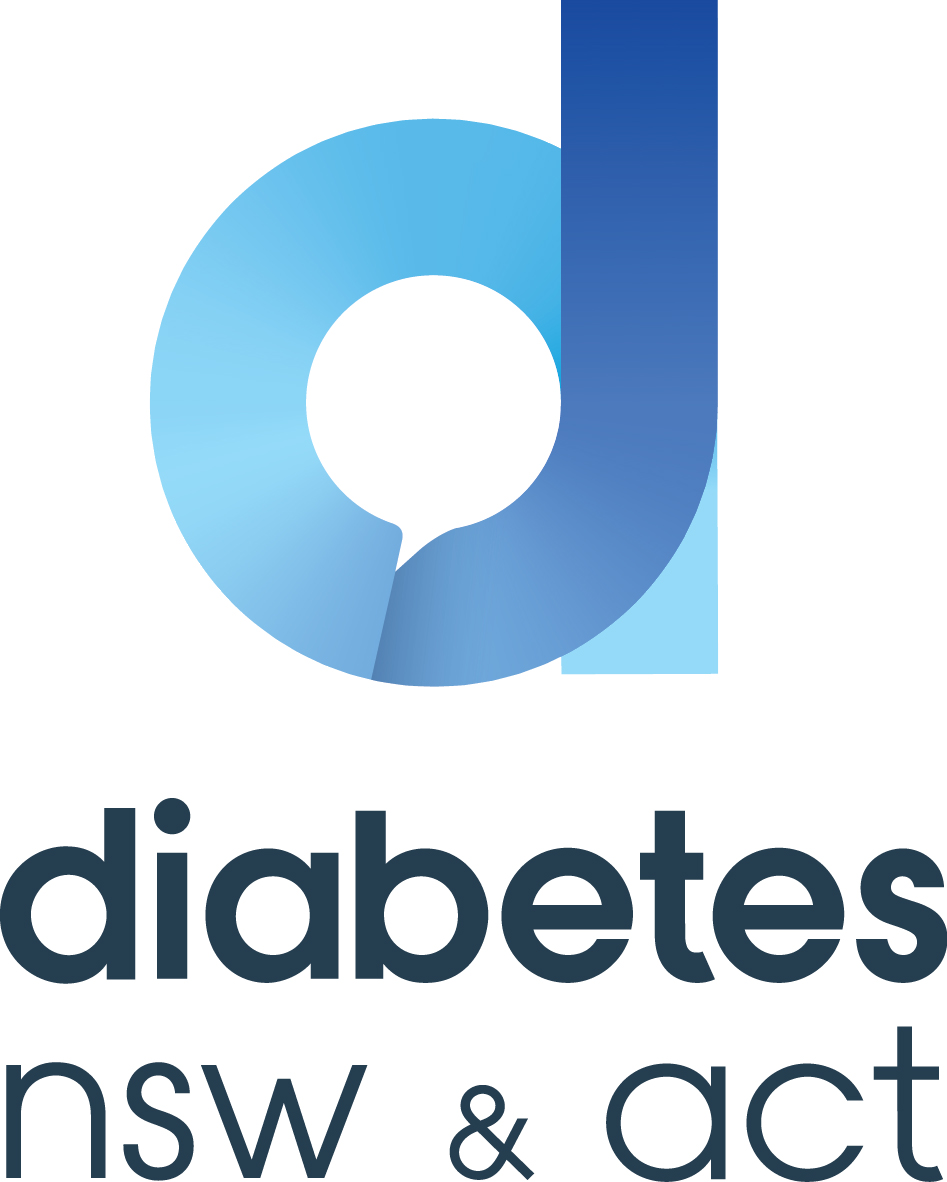Diabetes
In Australia, type 2 diabetes affects 85 to 90 per cent of all people with diabetes with over 1 million people registered as having the condition.
Diabetes is a condition where there is too much glucose (a type of sugar) in the blood.
The body uses glucose as its main source of energy. Glucose comes from foods that contain carbohydrates, such as potatoes, bread, pasta, rice, fruit and milk. After food is digested, the glucose is released and absorbed into the bloodstream.
While we always need a certain level of glucose in our blood, after eating most of the glucose needs to move from the blood into body tissues to provide energy.
Excess glucose is stored in the liver, or converted to fat and stored in other body tissues.
Insulin is a hormone made by the pancreas. Insulin lowers blood glucose levels by moving glucose from the blood into the muscle cells. It also helps glucose to be stored in the liver and in other tissues.
Types of diabetes
There are two main types of diabetes – type 1 and type 2.
Type 1 diabetes is an autoimmune condition where the body's immune cells attack the insulin-producing cells. As a result, people with type 1 diabetes cannot produce insulin and need insulin injections to survive.
With type 2 diabetes, the cells don't respond to insulin properly (insulin resistance) and the pancreas does not produce enough insulin for the body's increased needs. If the insulin cannot do its job, glucose builds up in the blood instead of getting into cells for energy.
High blood glucose levels over time can cause damage to various parts of the body. These are referred to as diabetes complications.
In Australia, type 2 diabetes affects 85 to 90% of all people with diabetes, with over 1 million people registered as having the condition. It usually affects people over the age of 40, however, younger people are being diagnosed in greater numbers. Aboriginal and Torres Strait Islander people are at higher risk for developing type 2 diabetes and also gestational diabetes.
Gestational diabetes is diabetes that occurs in, and is diagnosed during, pregnancy. Gestational diabetes usually goes away after the baby is born. However, women with gestational diabetes are at higher risk of developing type 2 diabetes later in life.
Research shows that type 2 diabetes can often be prevented or delayed with early lifestyle changes.
What to look for
Symptoms of type 2 diabetes
High blood glucose levels often cause signs and symptoms. Common signs and symptoms include:
- being more thirsty than usual
- passing more urine
- feeling tired and lethargic
- slow-healing wounds
- recurring infection
- blurred vision.
Some people may have no symptoms and as a result diagnosis may be delayed. Sometimes, even if symptoms are present, they may not be recognised or may just be thought to be due to getting older.
Risk factors for type 2 diabetes
There are genetic and environmental risk factors for developing type 2 diabetes.
Those most at risk of developing type 2 diabetes include:
- people with pre-diabetes
- Aboriginal and Torres Strait Islander people
- people of high risk ethnicities including Pacific Islanders, Maori, Asian (including the Indian subcontinent, or of Chinese origin) Middle Eastern, North African or Southern European
- people aged 50 and over who are overweight and obese
- those who have high blood pressure
- people who have a first-degree relative with type 2 diabetes
- all people with cardiovascular disease such as heart attack, angina, stroke, or narrowed blood vessels
- women with polycystic ovary syndrome (PCOS) who are overweight
- women who have had gestational diabetes
- people aged 55 or over (the risk increases with age)
- people with a first-degree relative with type 2 diabetes
- people taking certain antipsychotic medication or corticosteroid medication.
Lifestyle risk factors for type 2 diabetes include:
- being overweight, especially around the waist
- low levels of physical activity, including more than two hours of television watching per day
- unhealthy eating habits, such as regularly choosing high-fat, high-sugar, high-salt or low-fibre foods
- cigarette smoking
- high blood pressure and cholesterol.
People can assess their risk of developing type 2 diabetes by completing the Australian type 2 diabetes risk test (AUSDRISK). However the AUSDRISK score is not accurate in Aboriginal and Torres Strait Islander people – they need to have a blood test each year to check for diabetes.
If you are at risk of developing type 2 diabetes, it is strongly recommended that you have a laboratory blood glucose test ordered by your doctor (not using a home blood glucose meter) to check if you have diabetes. Don’t wait for symptoms to develop, as these may not appear until blood glucose levels are quite high.
Management of type 2 diabetes
The aim of diabetes treatment is to keep you as well as possible, and reduce the risk of damage to various parts of your body that can happen over time.
Managing blood glucose levels
Maintain blood glucose levels within the recommended range. You can help keep your blood glucose levels as near as possible to normal by:
- eating healthily
- losing weight if you are overweight and trying to maintain weight loss
- doing regular physical activity, including sitting less. If you are not sure what type of exercise is suitable for you, check with your doctor.
Glucose-lowering medications, and insulin, may also be needed to manage blood glucose levels.
Blood glucose targets are individualised. However, if you are taking either diabetes tablets that can cause hypos or insulin, the blood glucose levels generally recommended are:
- 6 to 8 mmol/L before meals
- 6 to 10mmol/L 2 hours after meals.
Check with your doctor or diabetes educator about the targets recommended for you.
Keeping your blood glucose levels within the target range can help prevent long-term problems that can affect your heart, blood vessels, eyes, kidneys and nerves.
Managing blood pressure and cholesterol
Keeping your blood pressure and cholesterol within the recommended range is very important to help prevent long-term problems, especially to your heart, blood vessels, kidneys and eyes.
Regular diabetes checks of your eyes, feet (blood supply and nerves), heart, blood pressure, kidneys and long-term blood glucose (HbA1C) are an important part of diabetes management. Your doctor and diabetes educator will help you arrange these tests.
Your diabetes healthcare team
A lifelong condition like diabetes is best managed with the support of a diabetes healthcare team. You are the most important member of your diabetes team. Other members are:
- your doctor
- diabetes educator
- dietitian
- podiatrist.
Depending on your needs, the team may also include:
- an endocrinologist (diabetes specialist) and other medical specialists such as a kidney specialist
- exercise physiologist
- counsellor.
Remission
Early evidence shows that some people with type 2 diabetes who are overweight and recently diagnosed can reverse type 2 diabetes if they are able to achieve significant weight loss.
Self-care of diabetes
Suggestions to manage your diabetes include:
- Link up with a diabetes team in your area. Your doctor might need to refer you, but this isn't always necessary.
- Check your blood glucose levels as recommended by your doctor or diabetes educator.
- Use any medication strictly as prescribed. Don't make changes to your diabetes medication without talking to your doctor about it first.
- Be physically active as often as you can and and where possible sit less. Work out ways that you can keep this going.
- Have a healthy eating plan. Choose healthy foods as well as suitable amounts.
- Keep a positive mental attitude.
- Seek advice from your doctor, or other organisations such as Beyond Blue (Tel. 1300 224 636) or Lifeline (Tel. 13 11 14) if you are anxious or depressed.
- See your doctor if you feel unwell and also see them regularly for review of your diabetes.
- Consider joining a support group.
Where to get help
- Your GP (doctor)
- Diabetes specialist or endocrinologist
- Diabetes healthcare team
- Diabetes Victoria Tel. 1800 637 700
- Dietitians Australia Tel. (02) 6189 1200 or 1800 812 942
- Beyond Blue Tel. 1300 224 636
- Lifeline Tel. 13 11 14
Source:
Better Health Channel, https://www.betterhealth.vic.gov.au/health/ConditionsAndTreatments/diabetes-type-2
Health Direct, https://www.healthdirect.gov.au/diabetes-types


